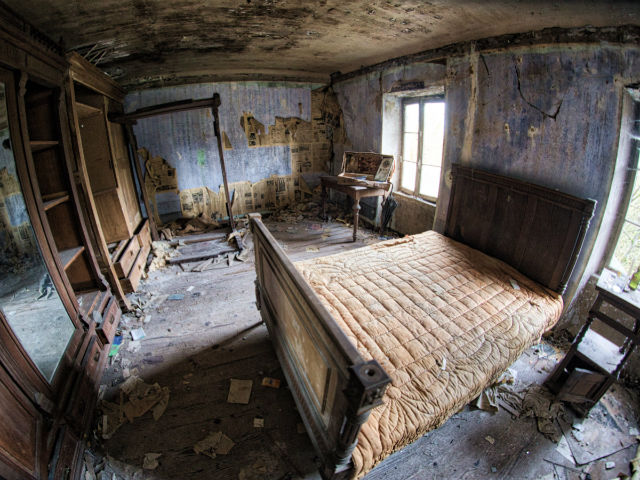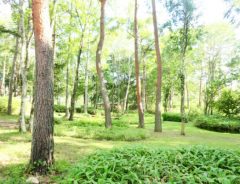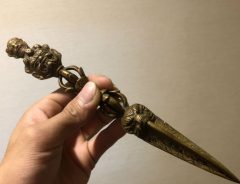
Source: Wendelin Jacober CC0 1.0
Two Men Discover A Rotting Corpse Whilst Exploring An Abandoned Hotel
- Tags:
- Creepy / Ebino / Green Hills Hotel / Haikyo / Japan
Related Article
-

80-Year-Old Japanese Man Wire Crafting As A Hobby Shows Off Astounding Artistry
-

McDonald’s Japan Celebrates Holiday Season With Steak Sauce and Lobster Mayo Chicken Nugget Sauces
-

10,000 yen luxury tomato juice released in Japan
-

Free entry to Botanical Garden in Nagano during 2020
-

Komeda Coffee releases mouthwatering trio of beefy short rib burgers
-

Japanese Twitter user finds valued anti-demon Buddhist ritual dagger for $5 at recycle shop


Urbexing, also known as Urban Exploration has become quite the popular pastime for a growing number of people looking for some kind of extreme thrill recently.
Normally involving some degree of illegal trespassing, the “sport” sees Urban Explorers enter, more often than not, old, abandoned and derelict buildings in the name of adventure. Despite the obvious unwanted trespassing, the majority of partakers do not intend to vandalise and instead, live by the phrase "Take only photographs, leave only footprints". Most Urban Explorers take part in Urbexing as a means of discovering the forgotten and unknown, gaining an adrenaline rush or as a form of ghost hunting.
With a number of abandoned theme parks, deserted pachinko and public venues and long since lived in rural abodes, Japan can provide a number of perfect locations for any Urban Explorer. Due to the country’s fast and continuous development and industrialization, as well as the expected natural disasters that strike annually, there is a large number of abandoned and derelict infrastructure dotted around Japan.
photo by Du Truong CC by 2.0
photo by Akira Kawamura CC by SA 2.0 Hashima Island also known as Gunkanjima or Battleship island is an abandoned residential island that was once the home over 5,000 people.
Disused buildings are known as Haikyo (廃墟) in Japanese, with perhaps the most famous of all being the abandoned island of Hashima. You may have heard of another popular haikyo; Gulliver’s Kingdom, a failed theme park which closed just 4 years after opening in 1997. The parks close proximity to Aokigahara forest (suicide forest) made the location a great spot for ghost hunts and urbexing until it was eventually demolised in 2007.
If ghost hunting and urbexing is your type of thing, then Japan may have made it to your list of must-explore locations. But beware, for if you chose to walk this pathway to discover the unknown, you might just come across something that you wish you hadn’t – this is exactly what happened to two men exploring an abandoned hotel in Miyazaki Prefecture last week.
Just after midnight on Wednesday the 15th, the two men, both in their twenties, entered the Green Hills Hotel in Ebino City, after reading about it on a specific website that lists numerous abandoned and haunted locations in Japan.
The hotel stopped operating in 1992, however, the owners did not pull the building down after its closure, and so it has stood in ruins for almost 3 decades. Due to it’s creepy appearance and atmosphere it has since become a popular spot for urban explorers. With its location being just off of the roadside and the glass panel of the front doors broken in, gaining access to the nine storey building isn’t difficult, which makes it one of the more popular sites for urban exploring.
source: Google Street View
After entering the hotel through the broken front door panels, the two men then made their way up, floor by floor, towards the top of the building, stopping to check each room as they went by. The two never completed their journey however, as their adventure came to a sudden end in a guest room on the sixth floor. There, on the bed facing up towards the ceiling, lay a dead body.
The two men, upon making the grim discovery, contacted the local police and reported their finding. Miyazaki’s local newspaper, Miyanichi Press, states that the two are regretful, although it is unclear whether they mean their actions or of what they have seen.
The corpse was of about 170 to 180 centimetres in height, with grey hair and was dressed in a short sleeved shirt and dark trousers. Unfortunately, due to the level of decay and no found personal belongings, the sex and age of the deceased is not yet known.
Investigators are currently working to determine when the death happened and if it was of natural causes, a murder or a suicide. Despite the heavy rate of decay, it seems unlikely that the corpse is an unfortunate, forgotten soul left behind when the hotel closed its doors almost 30 years ago. Even so, it is a sinister reminder that some places are just better left unknown and unexplored.